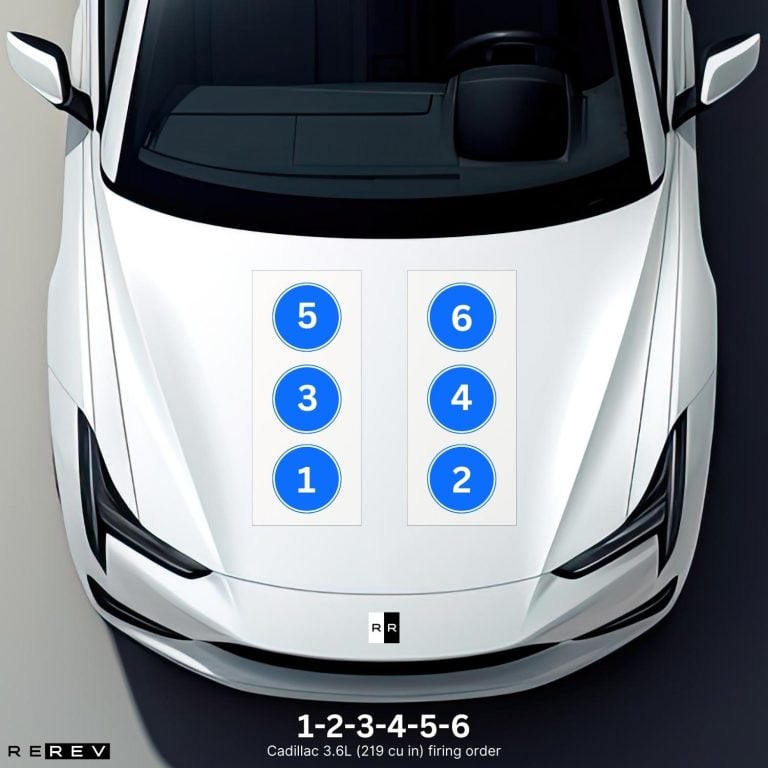Cadillac 3.6L (219 cu in) firing order — diagram & guide
A guide to the intricacies of the Cadillac 3.6L firing order for a smoother, more efficient ride.

As one of the longest-lasting engines in Cadillac’s lineup, the 3.6-liter V6 has received a lot of praise over its various generations and versions. It still kept the original engine block for the final version and that affected the overall reliability of the powertrain.
Still, there are some common issues that this engine had and they can be solved thanks to the Cadillac 3.6L (219 cu in) firing order. So, that’s what we’ll try to assist you in doing through this guide as we dig deeper into it and the cylinder layout of the engine.
Cadillac 3.6L firing order
The thing about this engine’s firing order is that sometimes drivers feel confused by its simplicity. To elaborate, the Cadillac 3.6L firing order is 1-2-3-4-5-6 which is not something you’d necessarily expect.
However, it’s a standard firing order for GM’s V6 engines within this engine family, and it only means good news for you as a driver. Using the firing order of an engine usually implies identifying all the cylinders and their positions, and then going through the firing sequence while checking each one along the way.
So, at least this time it’s easy for you since all you need to do is find the cylinder positions and go from the first one to the sixth one without jumping around. Don’t worry if it sounds a bit tough – we’ll help with that as well.
Cadillac 3.6L cylinder diagram

Another crucial thing to note is the cylinder layout of this engine which is crucial for using the firing order properly. Luckily, that’s pretty simple too since the passenger’s side cylinder bank contains cylinders 1, 3, and 5.
On the other hand, the right-side bank includes cylinders 2, 4, and 6, so the first cylinder is on the passenger’s side. This makes your job a whole lot easier since you can start with the front-end cylinders of both banks, proceed with the middle ones, and finally wrap up with the rear-end cylinders 5 and 6.
Cadillac 3.6L vehicle applications
Finally, the only thing left for us to discuss is the list of all the models that featured Cadillac’s 3.6-liter V6 engine. So, you can take a look at the following models and if your car is one of them with this engine, you’ll surely be able to use the mentioned firing order:
- Cadillac ATS
- Cadillac CTS
- Cadillac CT6
- Cadillac XT5
The same engine has been used in the Chevy Camaro RS, GMC Acadia, and the Buick Regal GS.
Our take
After everything we’ve covered in this guide, we truly hope you’ll be able to use this information for the benefit of your car’s engine.
Remember to start with the first cylinder since now you’ll have an easier time identifying it, and move your way through the cylinder banks from the front end toward the rear end of the engine.